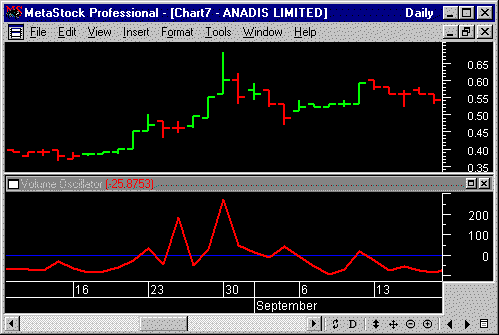|
Volume Oscillator

Description
The
Volume Oscillator displays the
difference between two moving averages
of a security's volume. The difference
between the averages can be expressed in
either points or percentages.
Interpretation
As volume
levels are increasing, shorter-term
volume moving averages will rise above
longer-term volume moving averages. This
is similar to how shorter-term price
moving averages rise above longer-term
price moving averages when prices are
increasing.
Thus, the
difference between two volume moving
averages of varying lengths (i.e., this
indicator) can be used to see if overall
volume trends are increasing or
decreasing. When the Volume Oscillator
rises above zero, it signifies that the
shorter-term volume moving average has
risen above the longer-term volume
moving average, or that the short-term
volume trend is higher (i.e., more
volume) than the longer-term volume
trend.
There are
many ways to interpret changes in volume
trends. One common belief is that rising
prices coupled with increased volume,
and falling prices coupled with
decreased volume, is bullish.
Conversely, if volume increases when
prices fall, and volume decreases when
prices rise, the market is showing signs
of underlying weakness.
The theory
behind this is straight forward. Rising
prices coupled with increased volume
signifies increased upside participation
(more buyers) that should lead to a
continued move. Conversely, falling
prices coupled with increased volume
(more sellers signifies increased
downside participation). |